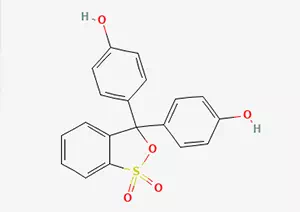Some studies have shown that phenol red may have estrogen-like activity, that is, in vitro or in vivo models, it can bind to estrogen receptors and induce some estrogen responses.
In today's scientific research field, numerous in-depth and meticulous research works have gradually revealed some unknown properties of phenol red. Among them, some studies that have been rigorously designed and repeatedly verified clearly indicate that phenol red exhibits unexpected estrogen-like activity under specific experimental conditions. Specifically, whether in elaborately designed in vitro cell culture models or in more complex in vivo models that are close to the real physiological environment, phenol red has demonstrated the ability to specifically bind to estrogen receptors. This combination is not an accidental physical adsorption, but rather a precise and biologically significant interaction similar to that between estrogen and its receptor. Once phenol red successfully binds to the estrogen receptor, it can, like estrogen, ingeniously induce a series of specific estrogen responses. These reactions involve complex intracellular signal transduction pathways and gene expression regulatory mechanisms, exerting potential influences on physiological processes such as cell growth, differentiation, and metabolism.
These studies are mainly based on the following findings:Cell proliferation: Studies have found that phenol red can promote the proliferation of certain cell lines (such as hormone-sensitive breast cancer cells), and its effect is similar to that of estrogen on cell proliferation.
Within the research scope of cell biology, scientists have discovered through extensive experimental exploration the unique role of phenol red in cell proliferation. When phenol red was added to the culture system containing specific cell lines, especially those breast cancer cells that were extremely sensitive to hormonal changes, a significant phenomenon attracted the attention of researchers. Under appropriate experimental conditions, phenol red can effectively stimulate the proliferation of these cells like estrogen. Specifically, breast cancer cells that originally had a relatively stable growth rate significantly accelerated their cell division rate under the effect of phenol red. Metabolic activities within cells have become more active, and the synthesis of various biomolecules related to cell growth and division has increased, such as the synthesis rates of proteins and nucleic acids, which have significantly improved. The morphology of the cells has also undergone corresponding changes, gradually transforming from the quiescent state to the active proliferative state, and the number of cells shows a significant upward trend. This proliferative effect bears astonishing similarities to the mechanism of estrogen's effect on cell proliferation. Both bind to estrogen receptors on the cell surface, initiate a series of downstream signal transduction pathways, and ultimately promote the cell to enter the proliferation cycle.
Gene expression: Some studies have shown that phenol red can simulate the effect of estrogen by regulating gene expression, such as promoting the expression of estrogen receptor-related genes in breast cancer cells.
At the research level of molecular biology, in-depth studies have found that phenol red plays an important regulatory role in gene expression. Gene expression is one of the core processes of cellular life activities, which determines the structure and function of cells. When phenol red enters cells, it participates in the complex gene regulatory network within the cells. In some key experiments, researchers observed that phenol red could precisely recognize and bind to specific gene regulatory regions within cells, which were closely related to the expression of estrogen receptor-related genes. Through this combination, phenol red can, like estrogen, activate or enhance the transcription and translation processes of these genes. This regulatory effect is particularly obvious in breast cancer cells. For example, the expression levels of estrogen receptor-related genes, which were originally at relatively low expression levels, significantly increased under the action of phenol red. This means that more estrogen receptor proteins have been synthesized within the cells, further enhancing the cells' sensitivity to estrogen-like substances. This change in gene expression can trigger a series of chain reactions, affecting the expression of other related genes and protein synthesis within the cell, thereby altering the function and characteristics of the cell and making it more inclined towards the physiological state stimulated by estrogen.
Enzyme activity: Studies have shown that phenol red can affect the activity of certain enzymes related to estrogen metabolism and signal transduction.
In the field of biochemistry research, enzymes, as biological catalysts, play a crucial role in the metabolism and signal transduction processes of cells. Research on phenol red has revealed that it can have an impact on the activities of these key enzymes. Specifically, in the complex metabolic network within cells, there are some enzymes that are specifically responsible for the metabolism and transformation of estrogen. For example, some enzymes can break down estrogen into less active or harmless products, while others are involved in the synthesis and activation process of estrogen. When phenol red is present in the cellular environment, it interacts with these enzymes. This interaction may alter the spatial structure of the enzyme, causing changes in the active center of the enzyme, thereby affecting the enzyme's binding ability to the substrate and catalytic efficiency. For enzymes related to estrogen metabolism, phenol red may inhibit their activity of decomposing estrogen, resulting in a relatively elevated estrogen level within cells. Or it may also enhance the activity of certain synthases and promote the production of estrogen. In terms of signal transduction, phenol red can also interfere with the activity of related enzymes. These enzymes play a crucial role in the process of estrogen signal transmission. They are capable of amplifying and transmitting the signals generated by the binding of estrogen to receptors step by step. The effect of phenol red on enzyme activity may disrupt the normal signal transduction sequence, causing cells to receive abnormal signals and thereby affecting the physiological functions and behaviors of cells.
Phenol red is used as an indicator of the pH of the culture medium: it is red when neutral, yellow when acidic, and purple when alkaline. Studies show that phenol red can simulate the effects of steroid hormones, especially estrogen. To avoid steroid reactions, cells, especially mammalian cells, should be cultured in a medium free of phenol red. Because phenol red interferes with the detection, some researchers do not use culture media containing phenol red when performing flow cytometry.
In the experimental operation of cell culture, phenol red is a widely used pH indicator for culture media. It has a unique color-changing characteristic and can present different colors according to the pH level of the culture medium. When the culture medium is in a neutral environment, phenol red will present a bright red color, which is clearly visible and provides an intuitive visual signal for the experimenters, indicating that the pH value of the culture medium is within the neutral range suitable for cell growth. When the culture medium gradually becomes acidic, the color of phenol red will change accordingly, from red to yellow. This color change is like a small "alarm", promptly alerting the experimenters that the pH level of the culture medium has changed and may need to be adjusted. When the culture medium is alkaline, phenol red will turn purple, once again providing the experimenters with important information about the acid-base state of the culture medium.
However, as research progresses, scientists have discovered that phenol red is not merely a simple pH indicator. Studies have shown that phenol red can also simulate the effects of steroid hormones in a cell culture environment, especially with a more prominent functional similarity to estrogen. This discovery has drawn great attention from researchers because during the cell culture process, the response of steroid hormones may interfere with the experimental results. For mammalian cells, they are more sensitive to the nutrients and environmental factors in the culture medium. To avoid the impact of steroid reactions on cell growth and experimental results, researchers usually choose culture media without phenol red when conducting cell culture, especially when culturing mammalian cells. This can ensure that cells grow in a relatively stable and pure environment, reducing the interference of external factors on cell behavior.
In some more sophisticated and complex experimental techniques, such as flow cytometry, the presence of phenol red can also cause many inconveniences. Flow cytometry is an advanced technique used for analyzing and sorting cells, which requires accurate detection and analysis of various characteristics of cells. However, the color and chemical properties of phenol red may interfere with the test results. For instance, the fluorescence signal of phenol red may be confused with the fluorescence labeling signal of the cells themselves, resulting in a decrease in the accuracy of the experimental data. Therefore, some rigorous researchers deliberately do not use culture media containing phenol red when conducting flow cytometry to ensure the reliability and accuracy of the experimental results.
Phenol red, as an acid-base indicator, can be used as an indicator for carbon dioxide concentration detection, diagnostic auxiliary experiments, etc.
In chemical and medical experiments, phenol red, due to its unique chemical properties, has become a very important acid-base indicator. This characteristic of it makes it play an indispensable role in many experimental scenarios. For example, in the detection of carbon dioxide concentration, since carbon dioxide dissolves in water to form carbonic acid, thereby changing the pH of the solution. Phenol red can keenly sense this change in pH and accurately indicate it through the change in its own color. When the concentration of carbon dioxide is high, the acidity of the solution increases, and the color of phenol red will change accordingly. Laboratory personnel can then determine the concentration level of carbon dioxide based on this color change. This detection method is simple and intuitive, providing a convenient tool for fields such as environmental monitoring and respiratory physiology research.
In diagnostic auxiliary experiments, phenol red also has extensive applications. For example, in the diagnosis process of certain diseases, the changes in the pH level of a patient's body fluids may be one of the important indicators of the disease. By adding phenol red to the body fluid sample to be tested and observing its color change, doctors can quickly obtain preliminary information about the pH level of the body fluid, providing a reference for further diagnosis and treatment. The use of this indicator is not only simple to operate but also has a low cost, and it can play an important role in primary medical units and on-site rapid detection.
Most common cell lines are tolerant to the medium containing phenol red and insensitive to it. However, some cell lines may be sensitive to phenol red or have adverse reactions. The following are some examples of cell types that may be sensitive to phenol red:
Eosinophils: Some eosinophils may be sensitive to phenol red. Phenol red appears yellow in an acidic environment and may interfere with the normal physiological processes of these cells.
Among numerous cell lines, most common cell lines have shown good tolerance to the medium containing phenol red. They can grow and metabolize normally in the environment containing phenol red and seem not to be affected by the presence of phenol red. However, scientific research indicates that certain specific cell lines have shown varying degrees of sensitivity to phenol red and may even cause adverse reactions.
Eosinophils are one of the representative types of cells. Eosinophils play an important role in the immune and inflammatory responses of the body. They have some unique physiological characteristics, one of which is that they are relatively sensitive to changes in pH. Because phenol red itself has the characteristics of an acid-base indicator, it will appear yellow in an acidic environment. When eosinophiles are in a culture medium containing phenol red, this color change may interfere with the normal physiological processes of the cells. For instance, some ion channels and receptors on the cell surface may experience functional abnormalities due to physical factors such as light reflection and refraction caused by changes in the color of the culture medium, or because of the interaction between phenol red and the surrounding environment of the cells. This may affect the exchange of substances and signal transmission inside and outside the cell, and thereby influence the normal metabolism and functional performance of the cell.
Nerve cells: Some nerve cells may have allergic reactions or cytotoxicity to phenol red. These cells are highly sensitive to external stimuli, including additives in the culture medium.
Nerve cells, as the basic structural and functional units of the body's nervous system, are highly sensitive and complex. They can respond promptly to even the slightest changes in the external environment. During the process of cell culture, some nerve cells may have an allergic reaction to phenol red or show obvious cytotoxicity. This is because there are various special ion channels and receptors on the cell membranes of nerve cells, which are highly sensitive to changes in the components of the culture medium. Phenol red, as an external additive, may interact with these structures on the surface of nerve cells. This interaction may lead to changes in the permeability of the cell membrane, disrupting the ionic balance inside and outside the cell. For instance, the concentration gradients of some important ions such as sodium ions and potassium ions may be affected, thereby interfering with the electrophysiological activities of nerve cells. In addition, phenol red may also trigger an immune response within nerve cells, leading to a series of stress responses in the cells. These reactions may have adverse effects on the survival and function of cells, and in severe cases, even lead to cell death.
Specific tumor cells: Some specific tumor cells may be sensitive to phenol red or other indicators.
In the field of tumor research, scientists have discovered that certain specific tumor cells also show special sensitivity to phenol red or other indicators. These tumor cells, due to their genetic mutations and abnormal metabolic characteristics, are more sensitive to the changes in components in the culture medium. The presence of phenol red may have an impact on the biological behaviors such as growth, invasion and metastasis of these tumor cells. For instance, some tumor cells may exhibit stronger invasive ability in a medium containing phenol red. This might be because phenol red activates the invasion-related signaling pathways within tumor cells through certain pathways. Alternatively, phenol red may also affect the sensitivity of tumor cells to drugs, reducing the efficacy of originally effective anti-cancer drugs in the culture medium containing phenol red. The sensitivity of this specific tumor cell to phenol red brings new challenges and opportunities to tumor research and treatment, which requires researchers to conduct further in-depth studies and explorations.
These cells may exhibit abnormal growth or metabolic behaviors in the medium containing phenol red.
When these cells sensitive to phenol red are placed in a culture medium containing phenol red, their growth and metabolic behaviors often deviate from the normal state, showing various abnormal phenomena. In terms of cell growth, there may be situations such as slowed growth rate and disordered growth cycle. For instance, cells that originally divide and proliferate according to certain patterns may, under the influence of phenol red, stagnate at a certain growth stage and fail to enter the next division cycle normally. Or, the growth rate of cells may suddenly accelerate, causing a sharp increase in the number of cells within a short period of time. However, such rapidly growing cells often have various physiological defects. In terms of metabolism, the metabolic pathways of these cells may change. Some originally normal metabolic reactions may be inhibited, while some abnormal metabolic pathways may be activated. For instance, the energy metabolism within cells may become disordered, leading to insufficient energy supply or energy waste. At the same time, the balance between the synthesis and decomposition of substances within cells will also be disrupted. The synthesis and degradation of some important biomolecules such as proteins and nucleic acids may become abnormal, thereby affecting the normal functions and survival ability of cells.




